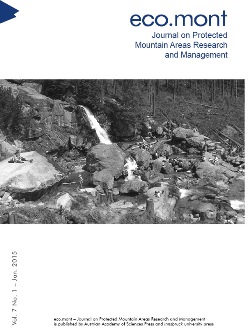
Eco.mont Vol. 7 Nr. 1, pp. 45-55, 2015/01/13
Journal on Protected Mountain Areas Research and Management

Defining the boundaries of natural heritage sites is critical to the protection, management and conservation of natural resources. This paper develops a multiobjective programming model based on game theory. It considers the economic and ecological benefits of various land use / land cover types, as determined by the local government and academic stakeholders’ expectations. A range of boundaries is identified by the Nash equilibrium, satisfying all players’ interests. Combining this with landscape types and considering geographic characteristics obtained from field investigations, we identify a final boundary for the Tomur buffer region in China’s Xinjiang Tianshan World Heritage Site. This novel process greatly improves our ability to shape optimal boundaries in environmental and economic terms. Future work should aim to consider widely the value orientations of various stakeholders, combining these with the cultural values and spatial properties of land use / land cover types to obtain more socially acceptable boundaries.